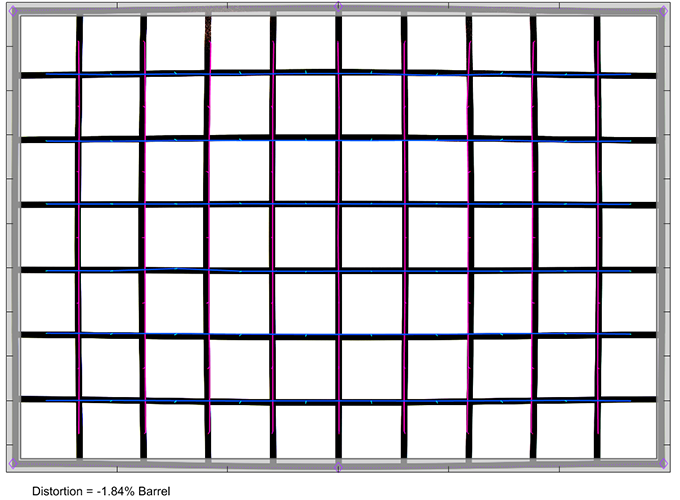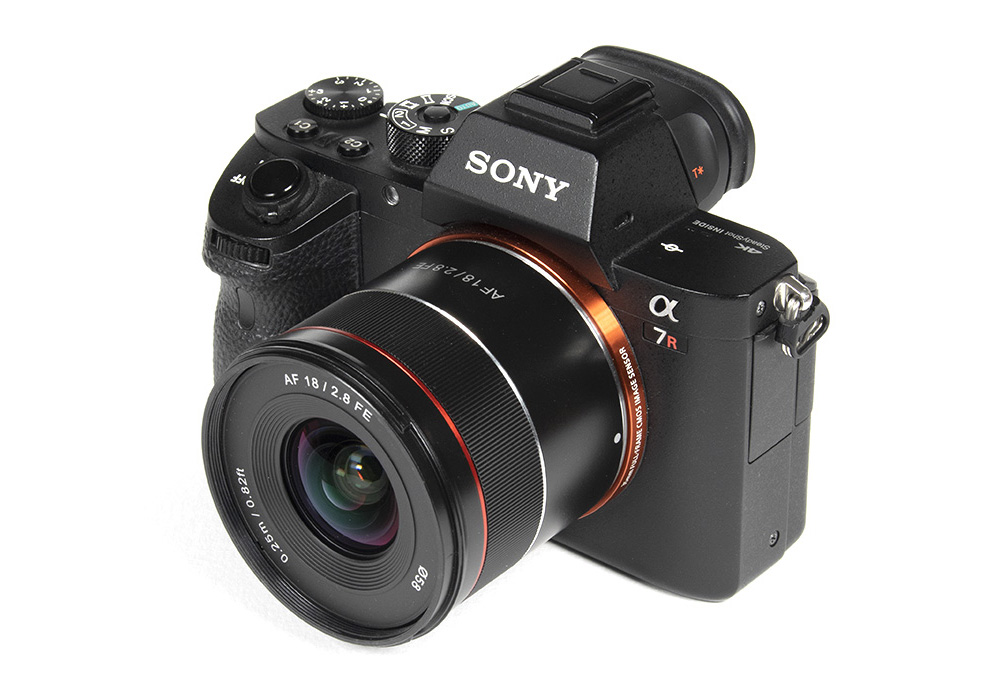by Klaus Schroiff, published August 2020
Introduction
During recent years, mirrorless lenses suffered from a disease – they got bigger and heavier. In fact, many mirrorless lenses are now more obese than their “former” DSLR counterparts despite all the marketing palaver promising the opposite. Of course, this happened for a reason. As a rule of thumbs in optical design, bigger and more complex is usually better – or it’s at least easier to achieve certain goals.
While this was all cool for a while because there were simply too few mirrorless lenses available, most consumers are no longer demanding “any” lens but something that matches the size of the cameras. You may argue about who started “the” trend towards smaller lenses but Samyang embraced this trend more and earlier than most. As of the time of this review, they released no less than 5 small prime lenses covering everything from 18mm up to 75mm and there are surely more to come. In this review, we’ll cover the widest of those lenses – the Samyang AF 18mm f/2.8 FE.
The tiny size and low weight come with a few compromises. One of them is build quality. It’s not 100% clear but the lens barrel seems to be made of plastic on a metal mount. There isn’t anything wrong with this per se but it feels a little toy-like – maybe also because the lens barrel lacks any texture. That being said, the focus ring is smooth and the lens doesn’t extend either. So maybe it’s just yours truly who simply prefers that “carved from a rock” feeling – take it or leave it. A small petal-shaped lens hood is provided.

The AF speed is not a primary criterion for an ultra-wide lens but it is slower than expected. While it does find the coarse focus quickly you can hear some micro-adjustments thereafter. Typical for pretty much all Sony FE mount AF lenses, manual focusing works “by wire” so you drive the AF motor when turning the focus ring. The manual focus precision is pretty decent here.
| Specifications | |
|---|---|
| Optical construction | 9 Elements in 8 Groups inc. 3x aspherical, 2xHR, 3xED elements |
| Number of aperture blades | 7 (rounded) |
| min. focus distance | 0.25m (max. magnification 1:11.1) |
| Dimensions | 63.5×60.5mm |
| Weight | 145g |
| Filter size | 58mm |
| Hood | petal-shaped, bayonet mount, supplied |
| Other features | – |
Distortion
Ultra-wide angle lenses tend to produce a certain degree of barrel distortions and this also applies to the Samyang AF 18mm f/2.8 FE. A native distortion of 1.8% is actually quite good for such a lens. However, most users probably prefer to have image auto-correction activated in which case the distortions are negligible.


Vignetting
Vignetting is pretty much unavoidable in ultra-wide images – it’s just a matter of how extreme it gets. In this case, it’s quite extreme indeed with a maximum light falloff of ~3.4EV (f-stops) at f/2.8.
Stopping down helps but even at f/8 the native vignetting is very high and visible.
With activated auto-correction the falloff is reduced by about 1EV (f-stop). This means that vignetting is still easily visible at f/2.8 but it’s acceptable from f/4 at least.

MTF (resolution)
The resolution characteristic of the tiny Samyang AF 18mm f/2.8 FE is pretty decent. The broader center quality is actually very good at f/2.8 but the borders and, more so, the corners are soft at this setting. This is not unheard of in ultra-wide lenses though. Stopping down to f/4 lifts the borders to very-good levels (albeit just) and the corners are good. The sweet spot is reached at f/5.6 with an excellent center and the corners have caught up with the borders. As usual, diffraction takes its toll from f/8 onwards and there’s a visible drop in quality at f/11.
The field curvature is very low for such a lens. The centering quality of the tested sample was Ok.
Please note that the MTF results are not directly comparable across the different systems!
Below is a simplified summary of the formal findings. The chart shows line widths per picture height (LW/PH) which can be taken as a measure for sharpness. If you want to know more about the MTF50 figures you may check out the corresponding Imatest Explanations

Chromatic Aberrations (CAs)
Lateral CAs are quite good with an average CA pixel width of ~1px at the image border. Of course, image auto-correction can come to the rescue here as well so it’s not really something to worry
about in real life.

Sample Images
Competition
It’s hard to compare the Samyang AF 18mm f/2.8 FE (shown to the left) to other lenses in this segment because it resides in its own price bubble. If we move up the food chain there’s the Sony FE 20mm f/1.8 G. It is pretty much better in every respect but it’s also 3-4x more expensive. In terms of paper specs, it also competes against the Zeiss Batis 18mm f/2.8 – and this one has an even higher price tag than the Sony G. While the Batis is certainly better, the Samyang does actually come fairly close – at least closer than the difference in price suggests.

Visual comparison courtesy of camerasize.com.
The Samyang AF 18mm f/2.8 FE isn't the silver bullet in its segment but given its size and also price tag this can't be expected anyway. If you are aware of its limitations, it can still be an excellent tool. While it isn't the last word on corner sharpness at f/2.8, the question is whether it's required for on your usage pattern. It's not ideal for astro photography but sharp corners aren't really needed for shallow depth-of-field photography. Stopped down, the image quality is actually very decent across the image frame so applications such as landscape photography or city scenes are certainly possible with pretty impressive results. The amount of lateral CAs is about average but can easily be corrected in post. Image distortions are moderate for such a lens even in RAW format. An unsurprising weakness - given the small front element - is vignetting. It's very heavy at f/2.8 and not brilliant at medium aperture settings either. Auto-correction reduces this a bit but some light falloff remains. We didn't run our formalized bokeh tests but based on the field images, the quality is in line with other ultra-wide lenses - meaning that it can be a bit on the rough side.
We aren't totally convinced by the build quality of this little Samyang lens. Formally there's nothing wrong with it. There's nothing shaky about it and it doesn't change size during focusing. The focus ring is smooth, too. It just feels a little … cheap. The AF speed is Ok for such a lens but it takes a while before it finally settles.
It has to be pointed out that the Samyang AF 18mm f/2.8 FE is - by far - the most affordable option ultra-wide AF lens in Sony E mount. And it's not only affordable but it also represents a great value proposition.
-
Optical Quality
-
Build Quality
-
Price / Performance


